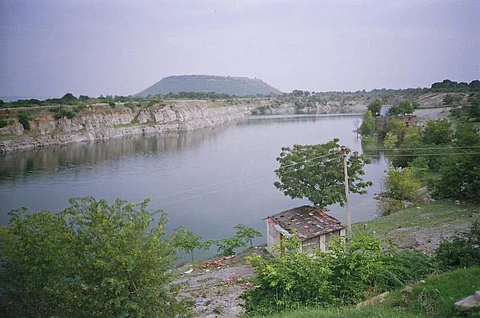

Absence of pre-monsoon rainfall in large parts of the country combined with heat waves have caused most of the country’s major reservoirs and river basins to dry up, data from Central Water Commission (CWC) released May 19, 2022 showed.
The important 140 reservoirs in the country monitored by CWC have only 32 per cent live water storage compared to their capacity. There has been a steady weekly drop in storage from 43 per cent in the beginning of April.
Many river basins also have storage below the average of the last 10 years, according to CWC. Sabarmati, which has just 8.54 per cent storage compared to its capacity, is staring at a departure of almost 63 per cent from normal. Mahi river basin has recorded a negative departure of 23.15 per cent, while Mahanadi and neighbouring east-flowing rivers have 13.46 per cent less storage than normal.
Storage is less than the full capacity in all 13 river basins for which data was collected by CWC. Ganga basin had just 39.89 per cent storage compared to its capacity, Narmada had 23 per cent, Godavari had 31.64 per cent and Krishna 23.92 per cent.
The crisis of water storage is directly linked to water availability, which is influenced by climate change. Water storage in the river basins gravely affects the socio-economic conditions of the regions dependent on the rivers for water supply.
Hariharjhor reservoir in Odisha, Nanak Sagar reservoir in Uttarakhand and Tattihalla reservoir in Karnataka had zero storage, the data showed. A total of 112 reservoirs with less than 50 per cent storage.
More water is lost to evaporation as the summer peaks, resulting in a dip in water levels. This raises concerns about meeting the daily water needs of cities as well as for summer crops sowed in February or early March and harvested by May-June.
At least eight states have below-normal storage in their reservoirs, CWC said. These are Himachal Pradesh, Punjab, Rajasthan, Jharkhand, Odisha, Nagaland, Chhattisgarh and Uttar Pradesh. The highest departure from normal storage was in Odisha at 35 per cent.
These are also the states which have the highest departure in cumulative rainfall. For example, Punjab and Himachal Pradesh meteorological subdivision received 90 per cent and 85 per cent less rainfall respectively.
Similarly, east and west Uttar Pradesh meteorological subdivisions have recorded 72 and 82 per cent less rainfall respectively, while east and west Rajasthan have recorded 73 and 82 per cent less rainfall.
Overall, the country’s eastern region with 21 reservoirs had the lowest water storage (23 per cent) compared to its capacity, followed by the northern region at 28 per cent.